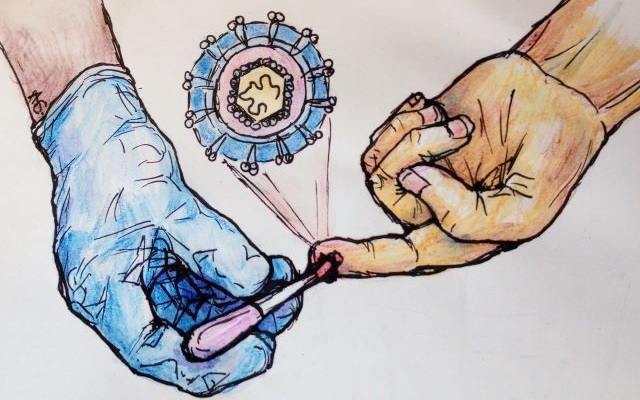DNA Extraction Technique Improved for Chagas Diagnosis
By LabMedica International staff writers
Posted on 28 Jan 2019
Chagas disease, caused by the protozoan parasite Trypanosoma cruzi, is endemic in many parts of the Americas, where six to seven million people are infected. In the acute phase of the infection, serology may still be negative but positive for parasite by microscopic examination or by culture in specialized medium.Posted on 28 Jan 2019
The Polymerase Chain Reaction (PCR) has become an important and sensitive diagnostic tool. The test is highly sensitive for diagnosis of acute and congenital Chagas disease. Conventional PCR has several drawbacks, especially cross-contamination. For this reason, quantitative PCR (qPCR) has now been more widely used and accepted.

Image: Trypanosoma cruzi in thin blood smears stained with Giemsa (Photo courtesy of Centers of Diseases Control and Prevention).
Scientists at the Cayetano Heredia University (Lima, Peru) and their colleagues improved and developed a more sensitive method to recover parasite DNA from clot samples for the diagnosis of Chagas disease. A total of 265 match pair samples of whole blood–guanidine (GEB) and clot samples were analyzed; 150 were from Chagas seropositive subjects. DNA was extracted from both whole blood-guanidine samples, using a previously standardized methodology, and from clot samples, using a newly developed methodology based on a combination of the FastPrep technique and the standard method for GEB extraction.
The blood samples mixed with Guanidine/EDTA (GEB) were processed using the High Pure PCR Template Preparation kit. A duplex qPCR was performed targeting the satellite sequence of the nuclear genome of T. cruzi and the sequence of an internal amplification control. The diagnosis of Chagas disease in human samples was based on serological assays. Enzyme-linked immunosorbent assays (ELISA) were performed using Chagatek Wiener Recombinante v3.0 ELISA. Indirect hemagglutination assay (IHA) was performed using the Chagas Polychaco kit. Western blot analyses were also performed.
The team reported that out of the 265 samples analyzed, 150 samples were from Chagas seropositive individuals. The mean DNA concentration was higher on clot samples than in GEB samples. Of the 150 samples from Chagas positive individuals by serology, 47 samples tested positive by qPCR with DNA extracted by both GEB and clot, but an additional 13 samples tested positive only in DNA extracted from clot. No serology-negative samples resulted positive when tested by qPCR. The agreement between the qPCR using clot DNA and GEB DNA was 95.9%.
The authors concluded that their improved methodology for the detection of T. cruzi DNA using clot samples which might improve early diagnosis and therefore will improve treatment and prognosis of infected individuals, especially of those with low blood loads of parasites. The study was published on January 11, 2019, in the journal PLOS Neglected Tropical Diseases.
Related Links:
Cayetano Heredia University













